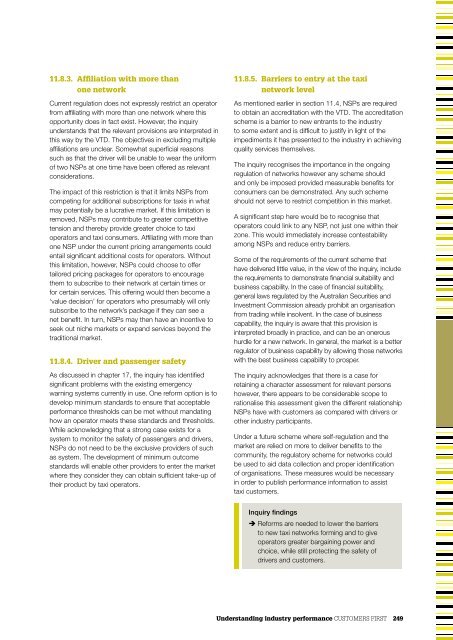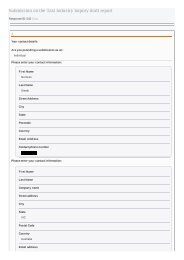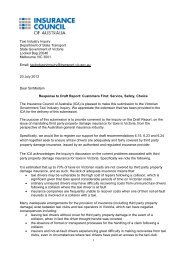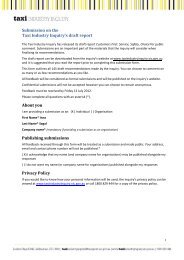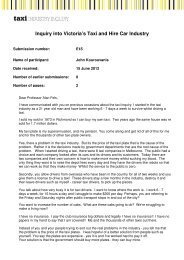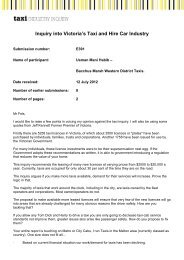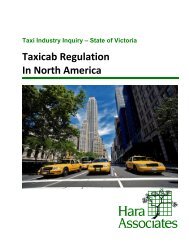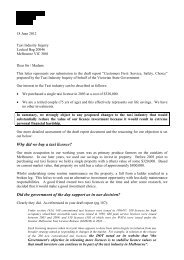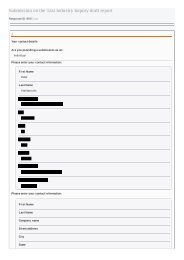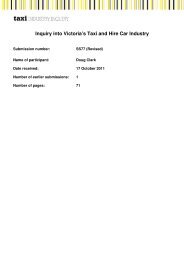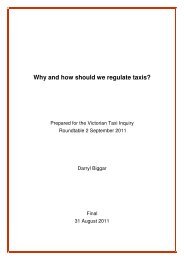Part D â Understanding and improving industry performance (PDF ...
Part D â Understanding and improving industry performance (PDF ...
Part D â Understanding and improving industry performance (PDF ...
Create successful ePaper yourself
Turn your PDF publications into a flip-book with our unique Google optimized e-Paper software.
11.8.3. Affiliation with more than<br />
one network<br />
Current regulation does not expressly restrict an operator<br />
from affiliating with more than one network where this<br />
opportunity does in fact exist. However, the inquiry<br />
underst<strong>and</strong>s that the relevant provisions are interpreted in<br />
this way by the VTD. The objectives in excluding multiple<br />
affiliations are unclear. Somewhat superficial reasons<br />
such as that the driver will be unable to wear the uniform<br />
of two NSPs at one time have been offered as relevant<br />
considerations.<br />
The impact of this restriction is that it limits NSPs from<br />
competing for additional subscriptions for taxis in what<br />
may potentially be a lucrative market. If this limitation is<br />
removed, NSPs may contribute to greater competitive<br />
tension <strong>and</strong> thereby provide greater choice to taxi<br />
operators <strong>and</strong> taxi consumers. Affiliating with more than<br />
one NSP under the current pricing arrangements could<br />
entail significant additional costs for operators. Without<br />
this limitation, however, NSPs could choose to offer<br />
tailored pricing packages for operators to encourage<br />
them to subscribe to their network at certain times or<br />
for certain services. This offering would then become a<br />
‘value decision’ for operators who presumably will only<br />
subscribe to the network’s package if they can see a<br />
net benefit. In turn, NSPs may then have an incentive to<br />
seek out niche markets or exp<strong>and</strong> services beyond the<br />
traditional market.<br />
11.8.4. Driver <strong>and</strong> passenger safety<br />
As discussed in chapter 17, the inquiry has identified<br />
significant problems with the existing emergency<br />
warning systems currently in use. One reform option is to<br />
develop minimum st<strong>and</strong>ards to ensure that acceptable<br />
<strong>performance</strong> thresholds can be met without m<strong>and</strong>ating<br />
how an operator meets these st<strong>and</strong>ards <strong>and</strong> thresholds.<br />
While acknowledging that a strong case exists for a<br />
system to monitor the safety of passengers <strong>and</strong> drivers,<br />
NSPs do not need to be the exclusive providers of such<br />
as system. The development of minimum outcome<br />
st<strong>and</strong>ards will enable other providers to enter the market<br />
where they consider they can obtain sufficient take-up of<br />
their product by taxi operators.<br />
11.8.5. Barriers to entry at the taxi<br />
network level<br />
As mentioned earlier in section 11.4, NSPs are required<br />
to obtain an accreditation with the VTD. The accreditation<br />
scheme is a barrier to new entrants to the <strong>industry</strong><br />
to some extent <strong>and</strong> is difficult to justify in light of the<br />
impediments it has presented to the <strong>industry</strong> in achieving<br />
quality services themselves.<br />
The inquiry recognises the importance in the ongoing<br />
regulation of networks however any scheme should<br />
<strong>and</strong> only be imposed provided measurable benefits for<br />
consumers can be demonstrated. Any such scheme<br />
should not serve to restrict competition in this market.<br />
A significant step here would be to recognise that<br />
operators could link to any NSP, not just one within their<br />
zone. This would immediately increase contestability<br />
among NSPs <strong>and</strong> reduce entry barriers.<br />
Some of the requirements of the current scheme that<br />
have delivered little value, in the view of the inquiry, include<br />
the requirements to demonstrate financial suitability <strong>and</strong><br />
business capability. In the case of financial suitability,<br />
general laws regulated by the Australian Securities <strong>and</strong><br />
Investment Commission already prohibit an organisation<br />
from trading while insolvent. In the case of business<br />
capability, the inquiry is aware that this provision is<br />
interpreted broadly in practice, <strong>and</strong> can be an onerous<br />
hurdle for a new network. In general, the market is a better<br />
regulator of business capability by allowing those networks<br />
with the best business capability to prosper.<br />
The inquiry acknowledges that there is a case for<br />
retaining a character assessment for relevant persons<br />
however, there appears to be considerable scope to<br />
rationalise this assessment given the different relationship<br />
NSPs have with customers as compared with drivers or<br />
other <strong>industry</strong> participants.<br />
Under a future scheme where self-regulation <strong>and</strong> the<br />
market are relied on more to deliver benefits to the<br />
community, the regulatory scheme for networks could<br />
be used to aid data collection <strong>and</strong> proper identification<br />
of organisations. These measures would be necessary<br />
in order to publish <strong>performance</strong> information to assist<br />
taxi customers.<br />
Inquiry findings<br />
è Reforms are needed to lower the barriers<br />
to new taxi networks forming <strong>and</strong> to give<br />
operators greater bargaining power <strong>and</strong><br />
choice, while still protecting the safety of<br />
drivers <strong>and</strong> customers.<br />
<strong>Underst<strong>and</strong>ing</strong> <strong>industry</strong> <strong>performance</strong> CUSTOMERS FIRST 249


